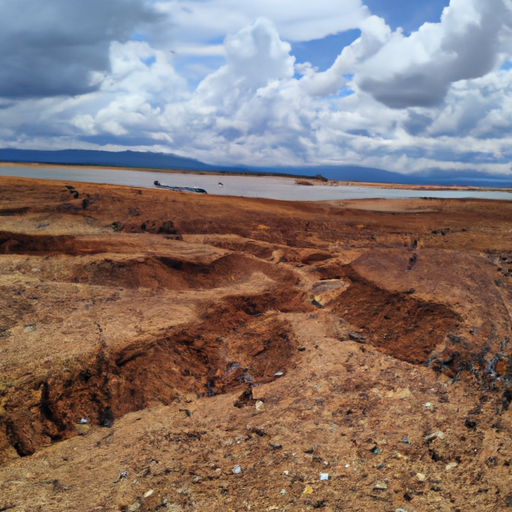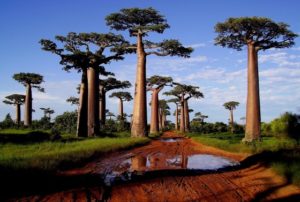Paradise Beaches for Unforgettable Photos in Madagascar
Nosy Be: the Island of Scents
Nosy Be, nicknamed the Island of Scents, is a true gem of Madagascar, renowned for its white sandy beaches and crystal-clear waters. For photography enthusiasts, it is the ideal place to capture breathtaking sunset shots, with shades of orange and pink reflecting on the ocean. The local market, ylang-ylang plantations, and fishing villages also offer unique opportunities for authentic photos of local life.
Exploring the surroundings, you will discover incredible Madagascar photo spots like Andilana Beach, often considered one of the most beautiful beaches on the island. Water activities such as diving and snorkeling allow you to photograph colorful coral reefs and diverse marine fauna. Nosy Be is a must-visit destination for any photography lover looking to capture the natural beauty of Madagascar.
Ifaty: the Golden Coast
Ifaty, located on the southwest coast of Madagascar, is famous for its golden beaches and turquoise lagoons. This tropical paradise is perfect for photos of idyllic seascapes. The Vezo fishermen, with their traditional canoes, add a cultural and picturesque touch to your shots. Sunsets in Ifaty are particularly spectacular, transforming the sky into a painting of vibrant colors.
For underwater photography enthusiasts, Ifaty offers incredibly diverse coral reefs. Diving in these clear waters allows you to capture stunning images of tropical fish, turtles, and even sharks. The surrounding mangroves and baobab forests are also exceptional spots in Madagascar for photography, offering a variety of natural scenes to capture.
National parks and nature reserves for breathtaking shots
Isalo National Park: the Malagasy grand canyon
Isalo National Park, often compared to the Grand Canyon, is a paradise for landscape photographers. Its spectacular rock formations, deep canyons, and natural pools create postcard-worthy scenes. Hiking in the park will lead you to panoramic viewpoints where you can capture breathtaking images of this rugged and unique terrain.
The park’s biodiversity is also impressive. You will have the opportunity to photograph lemurs, chameleons, and a variety of endemic birds. The contrasting colors between the red rocks, lush forests, and blue skies are particularly photogenic, making Isalo one of the most popular photography spots in Madagascar.
Lokobe Reserve: the preserved rainforest
Lokobe Reserve, located on the island of Nosy Be, is a preserved rainforest that is home to an incredible diversity of flora and fauna. For nature photography enthusiasts, it is a unique opportunity to capture images of lemurs, chameleons, and exotic birds in their natural habitat. The hiking trails will lead you through lush vegetation, offering numerous angles for spectacular photos.
The landscapes of Lokobe are also marked by winding rivers and picturesque waterfalls. The light filtered by the forest cover creates fascinating shadow and light effects, ideal for artistic shots. Lokobe is truly one of the must-visit photography spots in Madagascar for any nature photography enthusiast.
Historical and cultural cities for authentic photos
Antananarivo: the colorful capital
Antananarivo, the capital of Madagascar, is a place rich in history and culture. The bustling streets, colorful markets, and colonial buildings offer countless opportunities for authentic photos. The surrounding hills provide panoramic views of the city, ideal for capturing the essence of this vibrant metropolis.
The Queen’s Palace and various historical churches are must-visit sites for photographers. Scenes of everyday life, with locals going about their activities, add a human dimension to your shots. Antananarivo is undoubtedly one of the most dynamic photography spots in Madagascar for urban and cultural photography enthusiasts.
Fianarantsoa: the city of a thousand hills
Fianarantsoa, often called the city of a thousand hills, is another historical and cultural gem of Madagascar. Its paved streets, traditional houses, and panoramic views of the surrounding hills make it a prime location for picturesque photos. The old town, with its well-preserved colonial buildings, is particularly photogenic.
The vineyards of Fianarantsoa and tea plantations offer magnificent rural landscapes for photographers. The cultural festivals and traditional ceremonies that take place throughout the year are also privileged moments to capture authentic scenes of Malagasy life. Fianarantsoa is undoubtedly one of the most charming photography spots in Madagascar for enthusiasts of cultural photography.
Spectacular natural sites for landscape photos
Avenue of the Baobabs: the natural monument
The Avenue of the Baobabs is one of the most iconic natural monuments in Madagascar. Located near Morondava, this road lined with giant baobabs offers a striking spectacle, especially at sunrise and sunset. The silhouettes of the trees against the colorful sky create images of timeless beauty.
The baobabs, some of which are over 800 years old, are fascinating subjects for photographers. The contrast between the massive trunks and the surrounding landscape is particularly photogenic. The Avenue of the Baobabs is undoubtedly one of the most spectacular photography spots in Madagascar to capture unique and memorable landscapes.
Tsingy de Bemaraha: unique karst formations
Tsingy de Bemaraha is another spectacular natural site in Madagascar. These unique karst formations, with their sharp peaks and deep canyons, offer landscapes of strange and fascinating beauty. Hiking trails and suspended bridges allow for exploration of this labyrinth of stone and capturing impressive photos of this rugged terrain.
The biodiversity of the region is also remarkable, with many endemic species of plants and animals. The play of light and shadow created by the rock formations adds an artistic dimension to your shots. The Tsingy de Bemaraha are undoubtedly among the most unique and captivating photo spots in Madagascar for landscape photographers.
Typical villages for photos of local life
Ambalavao: rural charm
Ambalavao is a picturesque village located in central-southern Madagascar, known for its rural landscapes and artisanal traditions. The red brick houses, bustling markets, and terraced rice fields offer numerous opportunities for authentic photos of daily life. The Antemoro paper-making workshops and local vineyards add a cultural touch to your shots.
The surrounding mountains and spectacular rock formations, such as the Andringitra massif, provide impressive backdrops for your photos. Scenes of rural life, with farmers working in the fields and herds of zebus, capture the essence of Malagasy countryside. Ambalavao is undoubtedly one of the most charming photo spots in Madagascar for enthusiasts of capturing local life.
Ankarana: the village of caves
Ankarana, located in northern Madagascar, is famous for its caves and karst formations. The village itself offers a fascinating insight into local life, with its traditional houses and welcoming inhabitants. The caves of Ankarana, with their impressive stalactites and stalagmites, are prime subjects for spectacular photos.
The surrounding forests and underground rivers add an extra dimension to your photographic explorations. The lemurs and other wild animals that can be encountered along the way offer opportunities for wildlife photos. Ankarana is undoubtedly one of the most intriguing photography spots in Madagascar for photographers seeking authenticity and adventure.
The islands and archipelagos for marine shots
Nosy Iranja: the turtle island
Nosy Iranja, nicknamed the turtle island, is a true tropical paradise. Composed of two islands connected by a white sandbank, it offers breathtaking marine landscapes. The turquoise waters and pristine beaches are perfect for idyllic landscape photos. The marine turtles, which come to lay eggs on the beaches, add a unique dimension to your shots.
Water activities such as snorkeling and diving allow you to capture spectacular underwater images of coral reefs and tropical fish. The sunsets at Nosy Iranja are also particularly photogenic, transforming the sky and sea into a palette of vibrant colors. Nosy Iranja is undoubtedly one of the most enchanting photography spots in Madagascar for marine photography enthusiasts.
Mitsio Islands: diver’s paradise
The Mitsio Islands, located north of Madagascar, are a dream archipelago for divers and underwater photographers. The crystal-clear waters and pristine coral reefs offer exceptionally beautiful underwater scenes. Diving in these waters allows you to capture incredible images of tropical fish, colorful corals, and rare marine creatures.
The beaches of the Mitsio Islands, with their white sand and palm trees, are also photogenic subjects. The spectacular rock formations and turquoise lagoons add an extra dimension to your shots. The Mitsio Islands are undeniably one of the most breathtaking Madagascar photo spots for underwater photographers and diving enthusiasts.
Conclusion
FAQ
What are the best times to visit Madagascar for photography?
The best times to visit Madagascar for photography are during the dry season, from May to October. This period offers ideal weather conditions with clear skies and perfect natural lighting for capturing landscapes and scenes of everyday life. The months of September and October are particularly recommended for observing and photographing wildlife, including lemurs and migratory birds.
What photography equipment would you recommend for capturing Madagascar?
To capture the diversity of Madagascar’s landscapes and wildlife, it is recommended to bring a DSLR or mirrorless camera with a range of lenses. A wide-angle lens is ideal for landscapes and urban scenes, while a telephoto lens is essential for photographing wildlife from a distance. A tripod, ND and polarizing filters, as well as a drone for aerial views, can also be very useful for maximizing your photography opportunities.
Are there any restrictions for photography in certain locations in Madagascar?
It is important to respect local rules and restrictions when photographing in Madagascar. In certain protected areas, such as national parks, permits may be required for professional photography. It is also advisable to seek permission before photographing individuals, especially in villages and local communities, to respect their privacy and traditions.
How to get around between different photo spots in Madagascar?
Moving between different photo spots in Madagascar can be challenging due to the condition of the roads and the distances. It is recommended to rent a 4×4 vehicle or hire a local driver-guide to facilitate travel. Madagascar Trip’s & Pic’s offers personalized tours with transportation included, allowing you to focus on photography without worrying about logistics.
What precautions should be taken for the safety of your photo equipment in Madagascar?
To ensure the safety of your photo equipment in Madagascar, it is advisable to always keep your equipment with you and not leave it unattended. Use durable and waterproof camera bags to protect your equipment from the elements. When traveling, use locks and security tags on your luggage. Lastly, it is recommended to have insurance for your photo equipment before you go.








